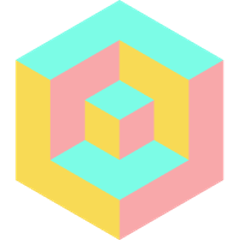gl-fbo
WebGL framebuffer object wrapper
Example
Try this in your browser if you have WebGL
var shell = require("gl-now")()
var createFBO = require("gl-fbo")
var glslify = require("glslify")
var ndarray = require("ndarray")
var fill = require("ndarray-fill")
var fillScreen = require("a-big-triangle")
var createUpdateShader = glslify({
vertex: "\
attribute vec2 position;\
varying vec2 uv;\
void main() {\
gl_Position = vec4(position,0.0,1.0);\
uv = 0.5 * (position+1.0);\
}",
fragment: "\
precision mediump float;\
uniform sampler2D buffer;\
uniform vec2 dims;\
varying vec2 uv;\
void main() {\
float n = 0.0;\
for(int dx=-1; dx<=1; ++dx)\
for(int dy=-1; dy<=1; ++dy) {\
n += texture2D(buffer, uv+vec2(dx,dy)/dims).r;\
}\
float s = texture2D(buffer, uv).r;\
if(n > 3.0+s || n < 3.0) {\
gl_FragColor = vec4(0,0,0,1);\
} else {\
gl_FragColor = vec4(1,1,1,1);\
}\
}",
inline: true
})
var createDrawShader = glslify({
vertex: "\
attribute vec2 position;\
varying vec2 uv;\
void main() {\
gl_Position = vec4(position,0.0,1.0);\
uv = 0.5 * (position+1.0);\
}",
fragment: "\
precision mediump float;\
uniform sampler2D buffer;\
varying vec2 uv;\
void main() {\
gl_FragColor = texture2D(buffer, uv);\
}",
inline: true
})
var state, updateShader, drawShader, current = 0
shell.on("gl-init", function() {
var gl = shell.gl
//Turn off depth test
gl.disable(gl.DEPTH_TEST)
//Initialize shaders
updateShader = createUpdateShader(gl)
drawShader = createDrawShader(gl)
//Allocate buffers
state = [ createFBO(gl, [512, 512]), createFBO(gl, [512, 512]) ]
//Initialize state buffer
var initial_conditions = ndarray(new Uint8Array(512*512*4), [512, 512, 4])
fill(initial_conditions, function(x,y,c) {
if(c === 3) {
return 255
}
return Math.random() > 0.9 ? 255 : 0
})
state[0].color[0].setPixels(initial_conditions)
//Set up vertex pointers
drawShader.attributes.position.location = updateShader.attributes.position.location = 0
})
shell.on("tick", function() {
var gl = shell.gl
var prevState = state[current]
var curState = state[current ^= 1]
//Switch to state fbo
curState.bind()
//Run update shader
updateShader.bind()
updateShader.uniforms.buffer = prevState.color[0].bind()
updateShader.uniforms.dims = prevState.shape
fillScreen(gl)
})
shell.on("gl-render", function(t) {
var gl = shell.gl
//Render contents of buffer to screen
drawShader.bind()
drawShader.uniforms.buffer = state[current].color[0].bind()
fillScreen(gl)
})
Result:
Install
Install using npm:
npm install gl-fbo
API
var createFBO = require("gl-fbo")
Constructor
There is currently only one default way to create a Framebuffer object. You can construct a framebuffer using the following syntax:
var fbo = createFBO(gl, shape[, options])
Creates a wrapped framebuffer object
-
glis a handle to a WebGL context -
shapeis a length 2 array encoding the[width, height]of the frame buffer -
optionsis an object containing the following optional properties:options.preferFloatUpgrade to floating point if available, otherwise fallback to 8bit. (defaultfalse)options.floatUse floating point textures (defaultfalse)options.colorThe number of color buffers to create (default1)options.depthIf fbo has a depth buffer (default:true)options.stencilIf fbo has a stencil buffer (default:false)
Methods
fbo.bind()
Binds the framebuffer object to the display. To rebind the original drawing buffer, you can just call WebGL directly:
//Bind the drawing buffer
gl.bindFramebuffer(gl.FRAMEBUFFER, null)
fbo.dispose()
Destroys the framebuffer object and releases all associated resources
Properties
fbo.shape
Returns the shape of the frame buffer object. Writing to this property resizes the framebuffer. For example,
fbo.shape = [ newWidth, newHeight ]
fbo.gl
A reference to the WebGL context
fbo.handle
A handle to the underlying Framebuffer object.
fbo.color
An array containing gl-texture2d objects representing the buffers.
fbo.depth
The depth/stencil component of the FBO. Stored as a gl-texture2d. If not present, is null.
Credits
(c) 2013-2014 Mikola Lysenko. MIT License

